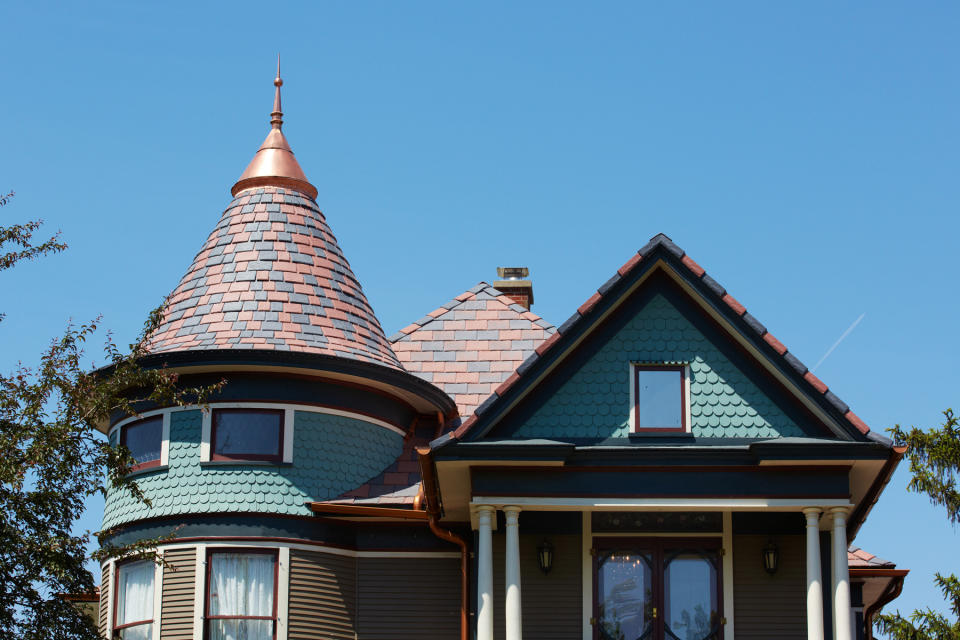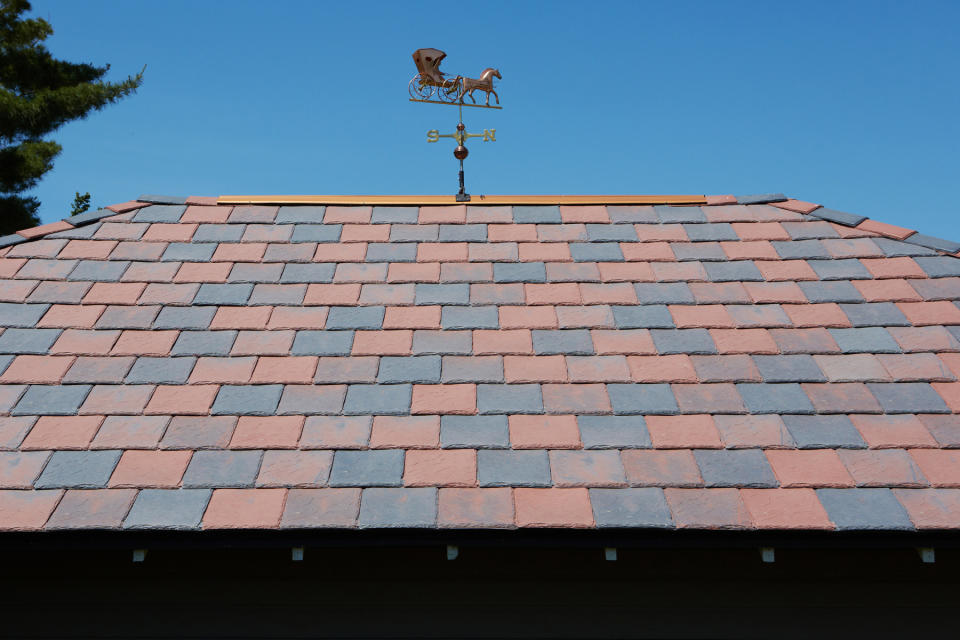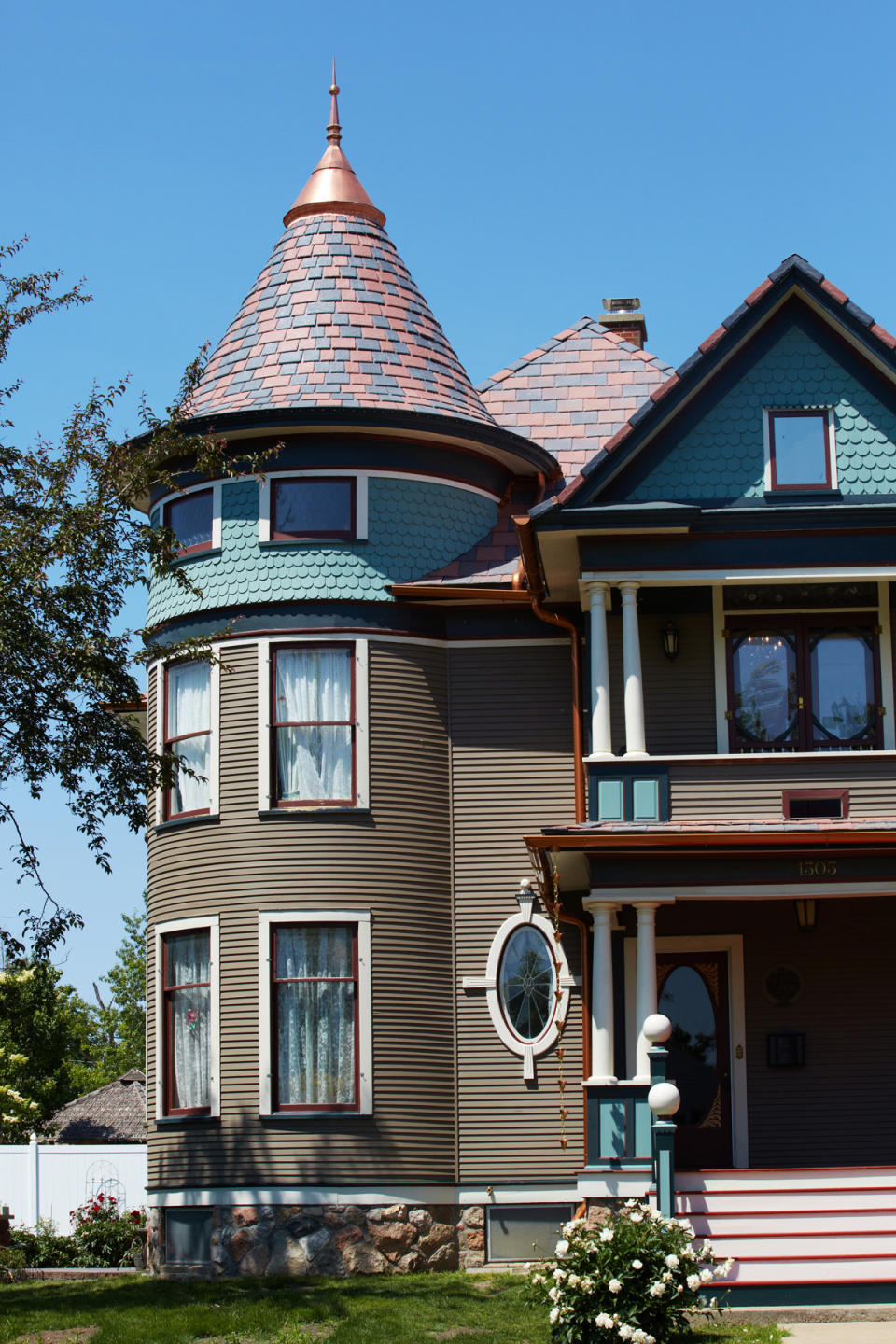Roofs get colorful
When a 2011 storm destroyed their black shingle roof, Carol and Ray Knoff of Vinton, Iowa, opted to replace it with a roof in vintage Victorian colors: a clay-like red and gray.
Victorian homes typically had red slate roofs, which weathered gray over time, so the blend worked, says Carol Knoff.
"It took Vinton a while to like it," she says, but the neighbors have since come around. The 1901 house is among several Victorians built when Vinton housed one of the world's largest canneries.
Many homeowners these days are shunning monotone roofs of brown, black and gray and perking things up with color — blues, reds, purples, greens or combinations of those hues.
"A lot of people are going with roofs that stand out on their own," says Kate Smith, a Newport, R.I.-based color consultant. "They want something different that expresses them and expresses their personality."
Which could be a tricky proposition, says Smith: "You want to stand out while still fitting into your neighborhood," she says.
She admits to being taken aback herself when colored roofs first came into vogue several years ago.
Exterior home color should always be used judiciously, she says. But it is even more crucial to use it correctly when you're adding it to a large fixed feature, like a roof, that is not easily changed with a fresh coat of paint.
"Anything that's permanent needs to blend," she says. "You don't want to have too many colors that aren't working together."
One trick for doing that, Smith says, is to select roof colors true to your home's history and architecture, and in natural shades.
For instance, Victorian homes originally had colored roofs — reds, orange, purple and green were typical — because the color of the slate varied so much, she says. Homeowners wanting to restore that look should match those subtle tones.
"When you saw purple, it was not a bright Barney purple," she says.
Bright metal roofs — most often red or green — are better suited for farmhouse-style homes, or used over small structures like porticos or bay windows. Steel blue is more European.
Colored roofs are also starting to crop up on "new American-style" homes, which Smith describes as combining popular styles and materials — perhaps, say, a stone and brick exterior with a copper roof.
The demand for colored roofs led DaVinci Roofscapes of Kansas City, Kan., to create faux slate and shake (wooden shingle) roofing in 49 colors "so homeowners can mix and match those if they want to get really creative," says the company's Wendy Bruch.
DaVinci's palette is based on the naturally occurring colors seen on historically accurate roofs, she says. But custom colors are increasingly popular, too.
"There can be some crazy things going on because we can create new colors," Bruch says.
DaVinci has worked with customers to create colors ranging from a chateau blue for a French provincial-style house to a green that matched the color on a metal roof with weather-related damage.
Many customers appreciate help picking the right shades, Bruch says. "It can make it confusing for the homeowner when you have too many options," she says.
For Knoff, the risk of installing a colored roof was well worth taking.
"We absolutely love it," she says. "When you see our house, it really stands out. But Victorians are supposed to be homes that stand out."



